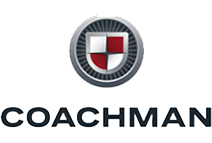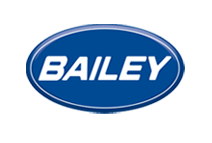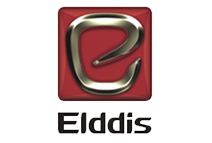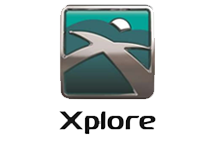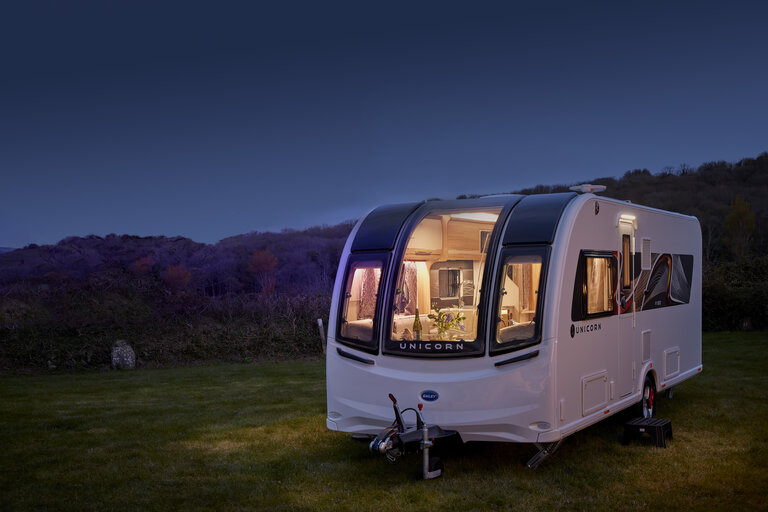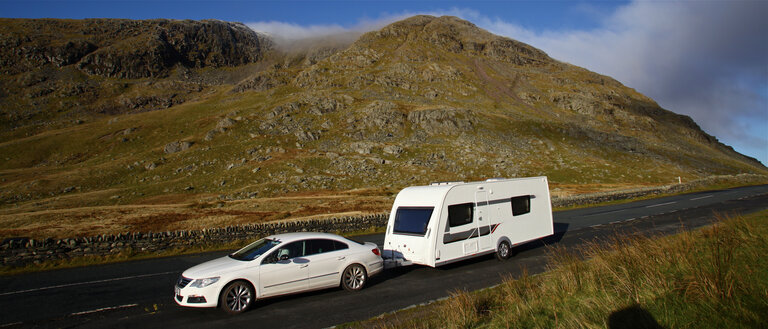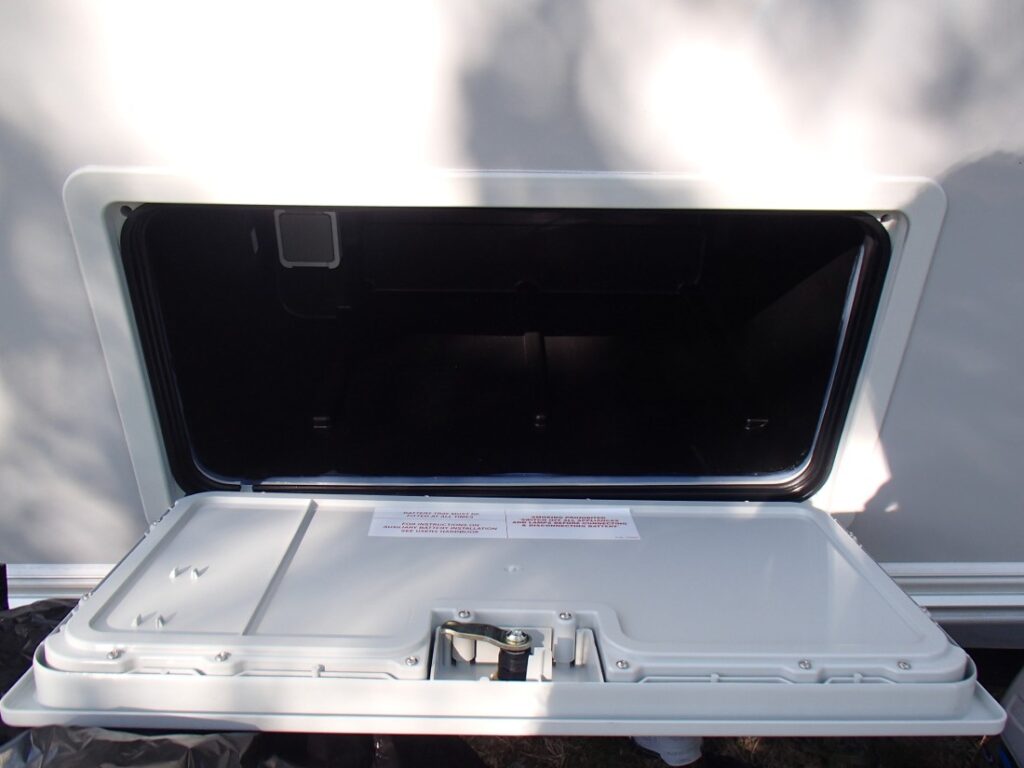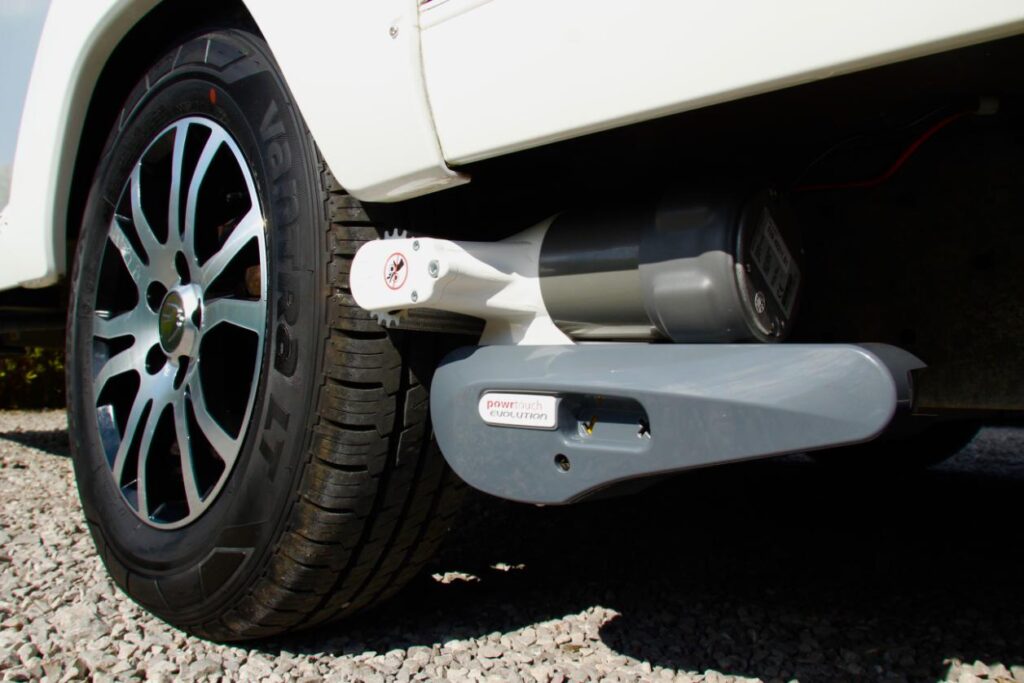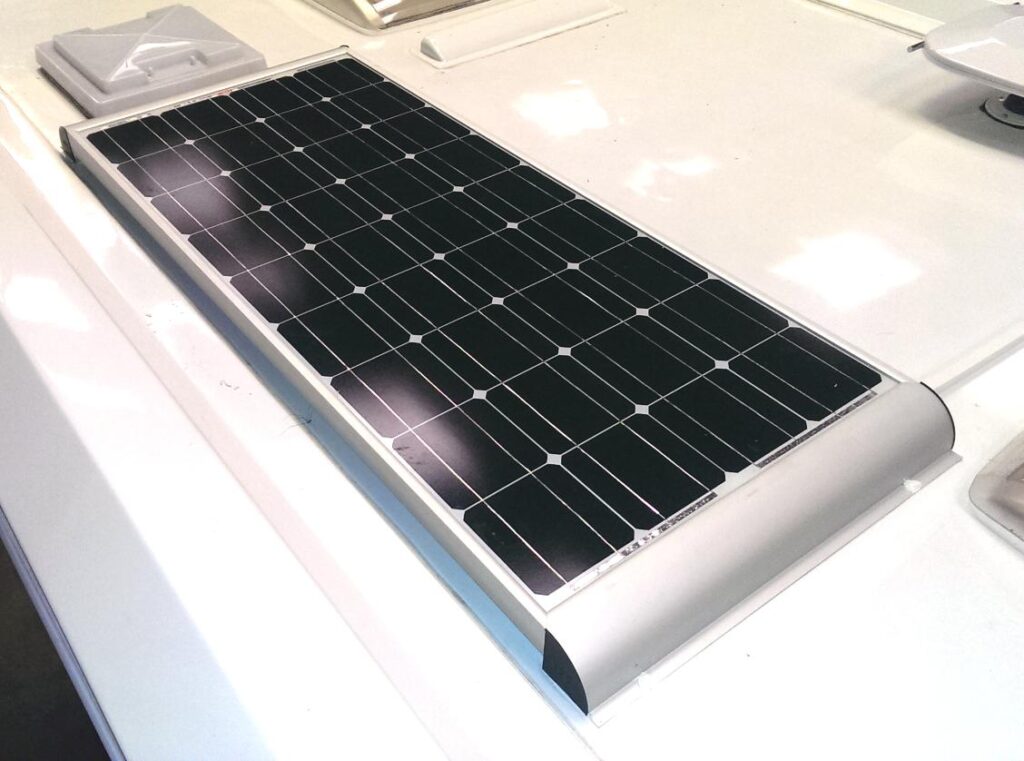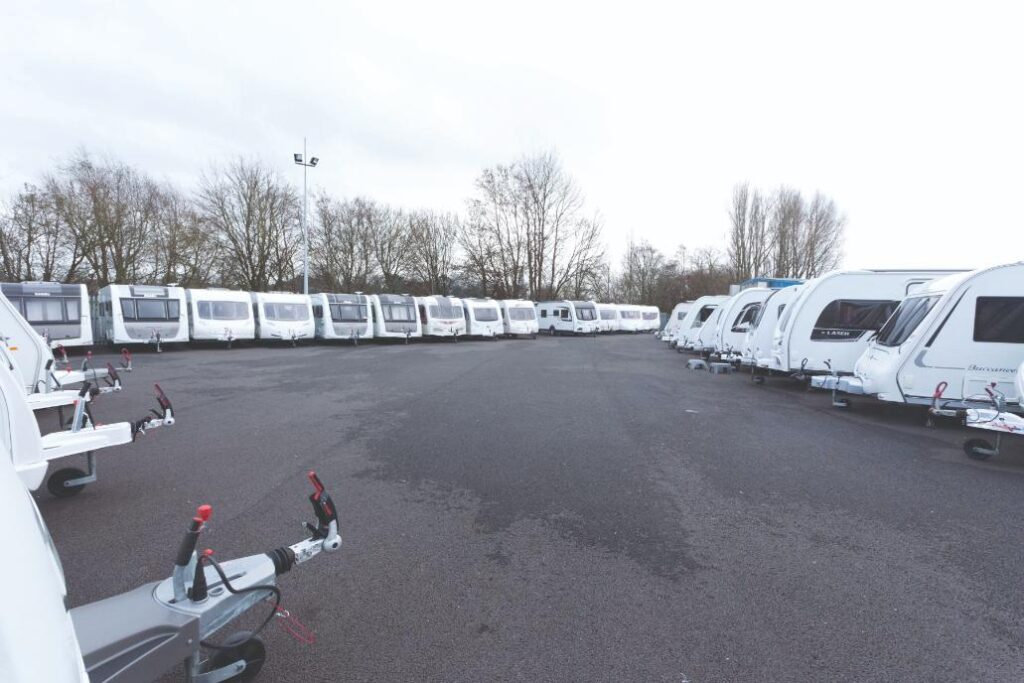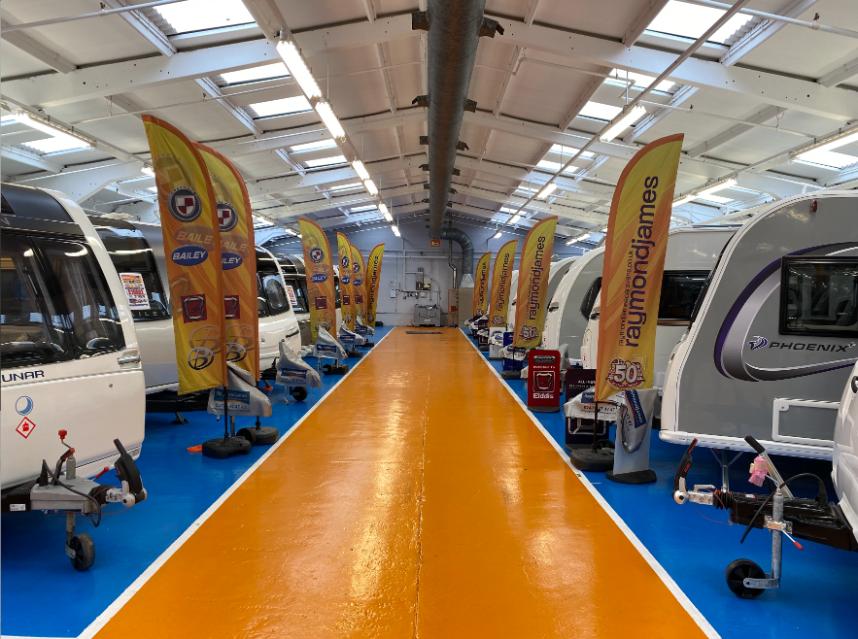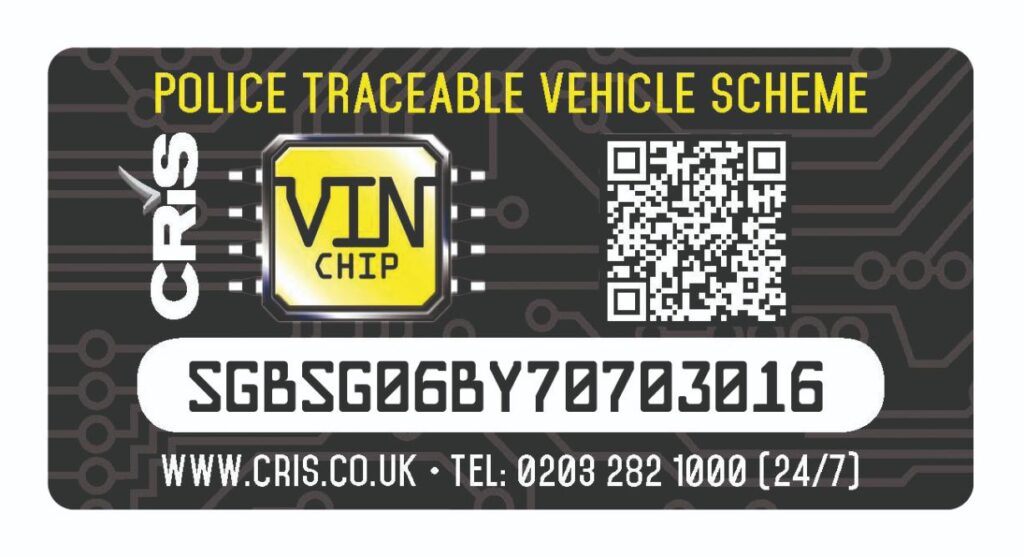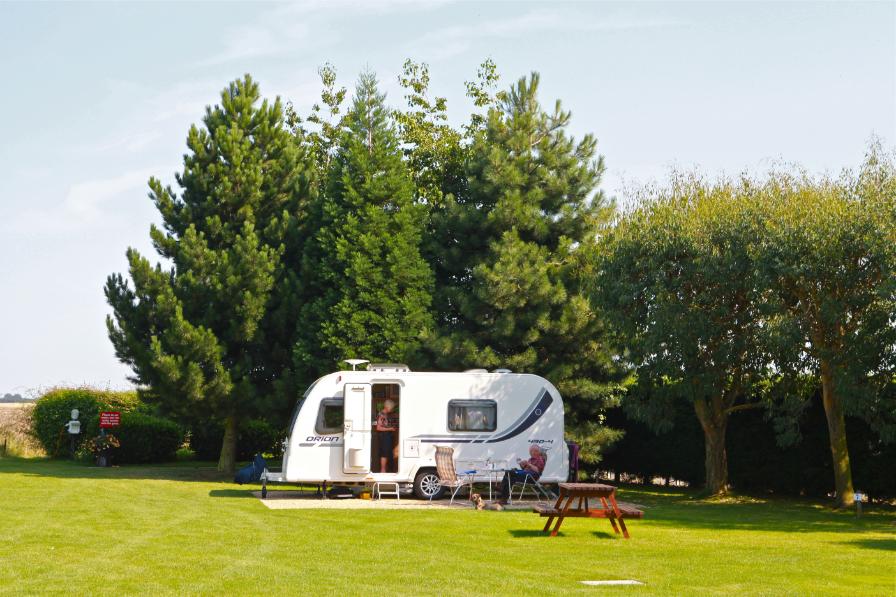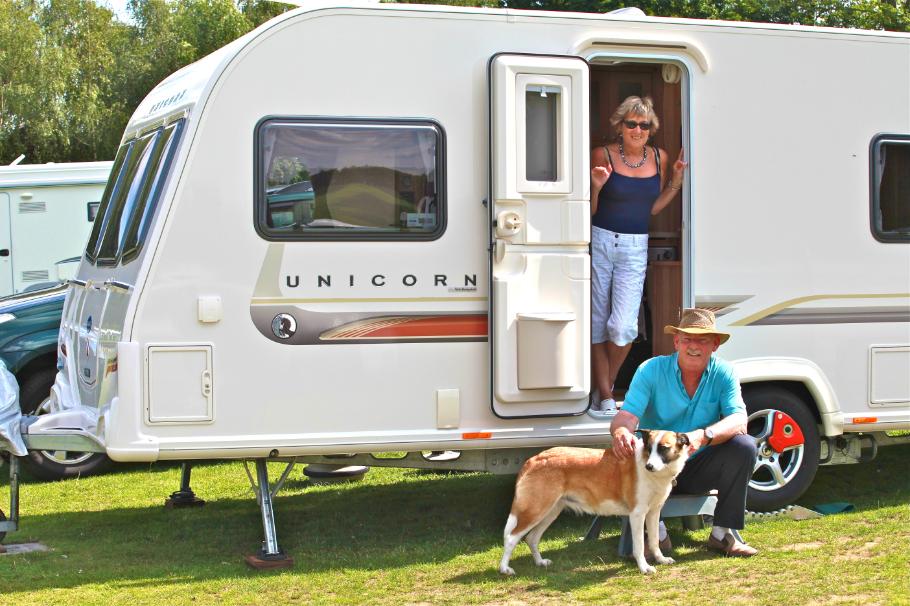 The ultimate guide to choosing the best touring caravan for you and your family
The ultimate guide to choosing the best touring caravan for you and your family
Ready to dive into the world of caravans and unlock the secret to finding your perfect match? Feeling a bit overwhelmed by the sea of options out there, and not sure where to start? Hey, I get it! Choosing the right touring caravan can feel like navigating through a maze of possibilities. But fear not, because I’ve got your back!
Here are the Top 10 things to consider when choosing the ideal caravan to suit your needs.
They include: size, cost, berths, fixed or make-up beds, tow weights, layout, wear and tear, new or used, type of heating and whether you buy privately or from a dealer.
These are all crucial factors that will affect your choice…and that’s before you get onto the details, like bed length and the height of the microwave!
Choosing the best touring caravan for you, involves a mix of all these factors, and they are all interconnected – the layout affects the bed choice, which in turn affects the caravan length, which might have implications for storing the tourer – it’s just a case of deciding which elements are most important to you.
So, let’s get started…
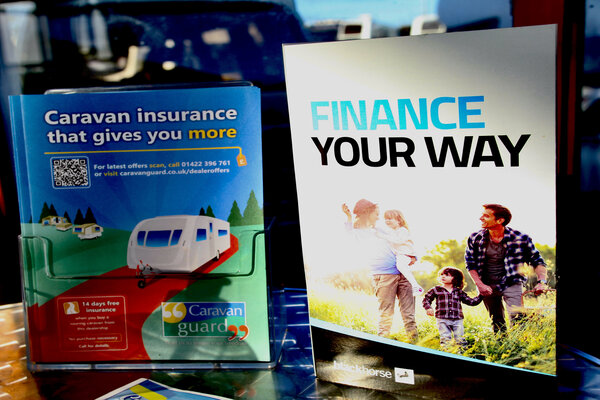
Think about: your part-exchange or deposit, increasing interest rates, the type of finance
Ah, the $64,000 question – sometimes literally these days!!
How much you can afford to pay for your touring caravan may dictate whether the caravan you buy is new or used, large or small, and a luxury or budget model.
It’s easy to get carried away at a show or in a shiny showroom, so, set a total budget, or an affordable monthly provision, and stick to it. If the price sounds too good to be true, then step back before you make any rash decisions.
Your deposit or part-exchange caravan will affect the deal, as might the APR interest rate you’ll be charged for finance. If your finance deal is based on a variable rate, you should make sure you can afford increased monthly payments if the interest rate rises.
Negotiate hard, and be fair on the price, but don’t mess the dealership around, especially if you’re ordering at a show.
If you’re buying with finance, you can often flex the deal by altering the loan length or tweaking the monthly payments…just don’t get carried away – the longer the repayment period, the more interest you’ll pay in total.
Also, remember to factor in extra start-up costs like camping accessories, a gas bottle, a leisure battery, and you may also have to buy a bigger tow car!
For a full explanation, see our Caravan Financing Guide (coming soon).
2. Caravan Size: What Will Suit Your Needs?
Think about: Berths, Space, Width/Length, Axles, Weight, Where you store it
How big does your caravan need to be? Usually, this will be dictated by the number of beds you need, but it’s also affected by the amount of internal space you require for kids or dogs. Typically, families go for four or more berths, while couples might select a two to four-berth van.
An extra-wide, eight-foot tourer offers immense space inside, but just check it’ll fit on your drive! I’ve towed various eight-footers and that extra few inches makes a much bigger difference inside than it does outside.
It could even be argued that the extra track width makes for a more stable tow. I certainly barely noticed the width when towing.
Of course, more beds usually means it’s a longer and heavier caravan, which can affect manoeuvring, towing and storage…and, possibly, the number of axles.
The largest caravans tend to have twin-axles, and because of this, they are easier and more stable to tow. But of course you’ll have extra servicing costs, and possibly higher insurance, storage and pitch fees.
Click here for a full guide to caravan types (coming soon).
Click here for a guide to caravan layout options (coming soon).
Lighter is generally better, as lightweight tourers are easier and more fuel efficient to tow, plus they give you a greater choice of tow car. Here’s why…
3. Caravan towing weights: What Can Your Vehicle Tow?
Think about: Matching your tow car, fuel consumption, maths!
In recent years, the towing rules (especially around the B+E driving licence category requirement) have been relaxed. But there are still some sensible rules to follow.
The main one is that your loaded caravan shouldn’t weigh more than your towcar. In fact, the caravan clubs and the National Caravan Council have agreed on the 85% rule.
This states that novice caravanners who’ve recently passed their driving test in their first year or two of ownership should only tow a caravan that weighs no more than 85% of the towcar’s kerbweight.
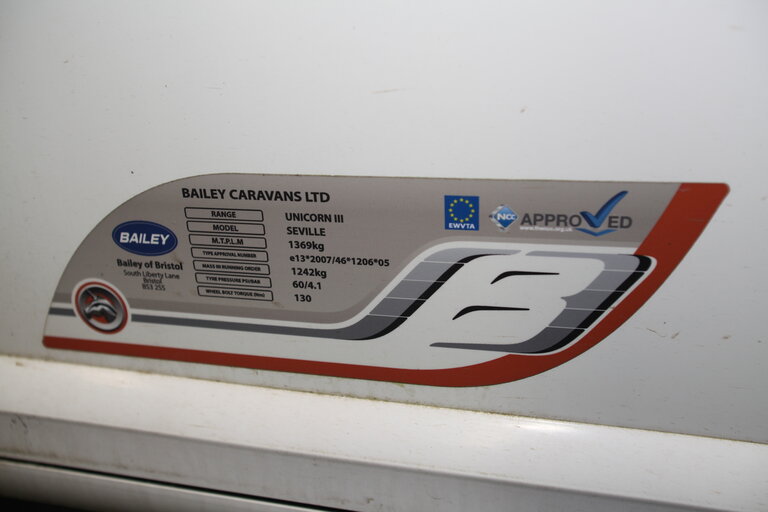
The caravan weight used in this calculation is the MTPLM (Maximum Technically-Permissible Laden Mass). You’ll find this on the small weightplate, usually located on the outside of the van, near to the door.
The MTPLM is the maximum weight the caravan can be when it’s fully loaded with all your possessions, food, water and gas bottle, etc.
Meanwhile, the car’s kerbweight can be found on a sticker in the door jamb, or in the manual.
Here’s an example (image to the right).
You want to buy a Bailey Phoenix+ 440 caravan with an MTPLM of 1347kg.
As a novice, that weight should be 85% or less of your towcar’s kerbweight, so your car must weigh 1585kg or more. Your Vauxhall Insignia Estate has a kerbweight of 1633kg, so you’re good to go. In fact, you could tow a caravan weighing up to 1388kg.
Tow car weight in kg x 0.85 must be higher than the caravan’s MTPLM.
Once you have gained some good towing experience, the Clubs say that you can increase that weight ratio to 100% – but never above.
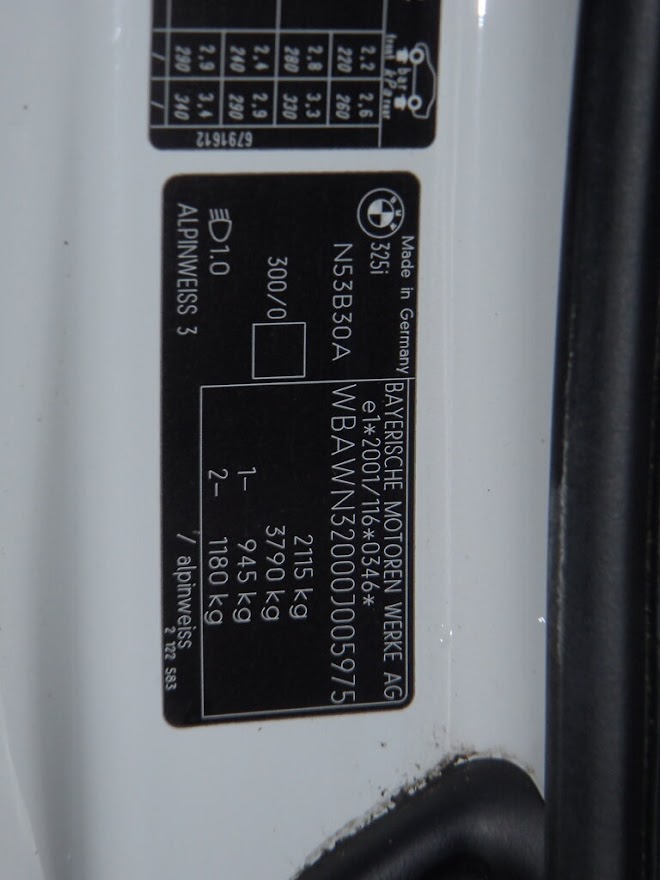
Taking the same example, your towcar kerbweight only needs to be 1347kg to pull the Phoenix, a VW Polo for example.
Based on this information, if you buy a bigger caravan, you should factor in the possibility that you might have to buy a bigger towing vehicle, too.
For a full explanation, see our Ultimate Caravan Weights Guide (coming soon).
4. Caravan Layout: Which Layout Will Work Best for You?
Think about: Lounge style, bed options, fixed, or make-up beds, washroom position, privacy, dining, kitchen space
There are probably a dozen popular caravan layouts which are the really big sellers, though, from time to time, a manufacturer will experiment with a new arrangement.
The fact is, you can’t have everything, so you need to prioritise your requirements and be prepared to compromise on a few things that aren’t so important to you.
The biggest questions are:
- Would you prefer a traditional lounge with parallel sofas and a cabinet, a wraparound U-shaped area, or something rarer, perhaps ‘L-shaped’?
- Do you want fixed or make-up beds?
- Do you need double beds, single and/or bunk beds?
- How big a kitchen do you require? Do you need plenty of worktop space?
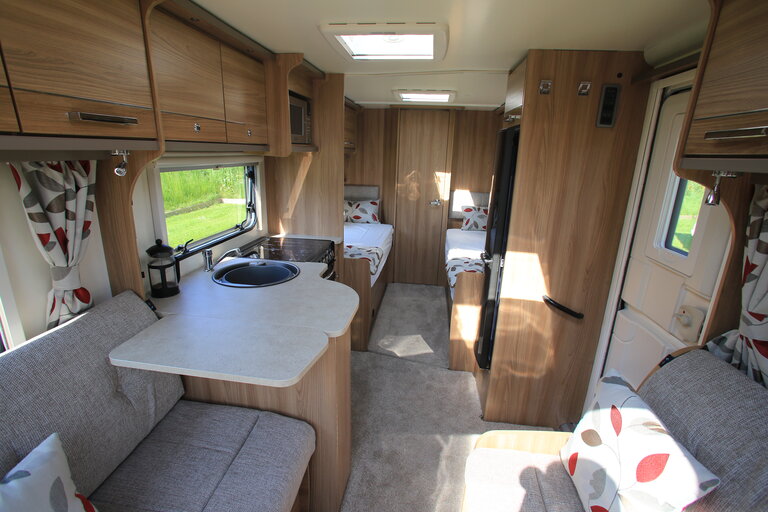
- What level of storage is needed?
- Do you prefer a single washroom or separate shower and loo facilities?
- What about a compact washroom with shower and loo spaces combined? These are fine as a back-up if you normally use the site facilities.
- How much aisle space do you need? Where will the dog(s) sleep?
- What about a separate lounge for the kids?
- How about a separate diner space?
- Privacy-wise, do you want the washroom to separate you from the front of the van (and the kids)?
Agree on your priorities and select a caravan accordingly, though you may find that your priorities change over time, once you’ve lived in a van.
Remember, adding a large porch awning or a full awning can transform your living, sleeping, storage and pet options.
For a full explanation, see our Ultimate Caravan Layout Guide (coming soon).
5. Caravan Storage: How Much Space Do You Need?
Think about: Space for storing clothing, provisions, accessories, hobby kit, and wet stuff
The amount of locker, drawer, wardrobe, and cupboard space you have in a caravan is crucial, and shouldn’t be overlooked or sacrificed, as I guarantee you’ll come to regret it.
A decent amount of hanging space is important, if you spend extended time away in your tourer and need more formal clothing from time to time. Consider the length of the clothes you’ll be hanging, too. Many caravan wardrobe spaces only have hanging-length for shirts, not longer dresses, or coats.
Outdoors and watersports fans may appreciate the inclusion of a wet-locker for storing wetsuits, sports equipment, or even sandy buckets and spades. Usually, these storage spaces have external access and feature a plastic liner.
Front gas lockers offer great storage potential, but several recent caravan ranges have done away with them. Where will you put your power cable, spare wheel and steady wrench, etc?
Fixed beds usually conceal lots of usable storage space underneath. The best designs offer spring-assist when you lift the bed base and mattress to access this space.
Just remember that storing heavy contents under beds that are positioned behind the axle(s) can enhance the pendulum effect when towing, which can be dangerous.
Move heavy contents, such as awnings, to the centre of the van, over the axle, when towing.
Click here to see our safe caravan loading feature (coming soon).
6. Caravan Features: What Do You Need and Want?
Think about: What standard and supplementary accessories and components you need on your caravan
There are many choices to make when it comes to features. Some are essential, like heating, while others are nice-to-haves like solar panels and auto-levelling.
Take heating, would you prefer Dometic or Truma blown-air heating, or does Alde’s ‘wet’ radiator system tickle your fancy? Blown-air is reckoned to be quicker to heat the caravan interior, but Alde heating does it more thoroughly and evenly. Or maybe you’d prefer underfloor heating?
And what about things like fridge and cooker/hob sizes? Is there a microwave and plenty of fridge/freezer space? What about extras like solar panels, air-conditioning, motormovers, satellite dishes and auto levelling.
Four-season touring fans, should also consider the level of floor and wall-panel insulation, for a warmer and cosier (and cheaper) winter-caravanning experience.
Some features (appliances and components) can help to extend your caravanning lifestyle, by taking the legwork and elbow grease out of caravanning. Read about them here (coming soon).
7. Caravan Condition: New or Used?
Think about: Would you be happier with a higher-spec used tourer for the same budget as a lower-spec new one?
Obviously you’ll get more for your money if you buy a pre-owned tourer, so explore both options.
Typically you might get a three or four-year old luxury, second hand caravan for the same price as a new mid-range one, and, given that many caravans are hardly used – especially following the Covid sales explosion – there are some absolute bargains out there.
If you really want a brand new caravan, but want to save a few bob, too, you could consider buying an end-of-year or previous-year’s model. These may have sitting on the forecourt for six months to a year, but have never been used, and they can be picked up with thousands knocked off the price.
That’s because dealerships need to clear space on the forecourt for the next-year’s models coming in, so will often take a hit on the price.
Dealerships generally sell new and used caravans, but you can see touring caravans for sale privately off the likes of Autotrader, Ebay or Facebook Marketplace.
8. Dealership or Private sale?
Think about: Are you willing to take the increased risk of buying privately to get more caravan for your money?
You can save a few quid by buying a used caravan from a private individual rather than a dealership, but, as the price drops, the risk of buying a problem caravan goes up, and, of course, there’ll be no warranty.
Privately-retailed caravans are sold as seen (Caveat Emptor, buyer beware – applies), and there could be any number of issues that are invisible to the naked eye. The biggest risk is water ingress, which could be in the structure, but not immediately noticeable.
Of course, buying a model from a well-known caravan manufacturer from a reputable dealer, minimises these risks, as your caravan will have been serviced, PDI’d and will come with a warranty.
Also check if there is any outstanding finance on the caravan if you buy privately.
Again, the choice is yours, but only buying from a dealership gives total peace of mind…and what’s that worth.
9. Service history and warranties
Think about: How much can you deduce about the history of your potential purchase through all the paperwork supplied?
A used caravan that’s been properly prepared for sale will often look shiny and new, but may be hiding some serious issues beneath the surface, such as undeclared body repairs, signs of damage or signs of damp.
Minimise your chances of buying a dud, by carrying out the following checks:
- Check the caravan owner is who they say they are by carrying out a Caravan Registration and Identification Scheme (CRiS) check. This check is quick and easy, with just a small fee payable, and it will confirm who the registered owner of the caravan is. You can check this by calling the CRiS desk at HPI on 01722 411430.
- All legitimate caravans should have a CRiS registration document, and the vehicle’s 17-digit Vin number should either be etched into each window, or, since 2015, found on a tamper-evident VIN ( vehicle identification number) Chip sticker on windows and the gas locker. Scannable RFID chips are also hidden randomly inside the caravan. If the stickers have been removed, or the chassis number and window etching ground off, you should avoid the caravan at all costs.
- Sensible caravan vendors will have kept the paperwork and log-book related to their tourer. You should take time to look through the service record and invoices to make sure the vehicle has been serviced at regular intervals, and that there are no signs of serious issues with the caravan, especially water ingress.
- When buying from a dealership, make sure you are clear on what warranty is being offered. Reputable dealerships will be keen to put right any issues quickly and efficiently, and I recommend spending a night or two close to the dealership, so any small issues you discover can quickly be sorted out.
10. Condition – Has the caravan been cared for?
Think about: Investigating the tell-tale signs that indicate how well your caravan has been cared for
In general, you’ll be able to tell whether a tourer has been looked after. As well as a full service book, some other indicators include:
- Did the original owner care enough to invest in Paint Protection from Paintseal or DiamondBrite?
- What age are the tyres (see the four-digit number on the tyre wall, for example ‘1020’ means the tyres were made in week 10 of 2020). Tyres over five years old should be changed, and, if they’re three or four years old, you may want to try to negotiate a discount.
- Likewise, the orange or black 8mm gas pipe from the gas bottle is standardised (EN16436) and date-stamped in a similar fashion. Typically, gas pipes should be replaced after five years, unless they are made by Truma or GOK, in which case it’s 10 years. If any pipe is cracked or brittle, it should be replaced immediately.
- A well-looked after and PDI’d tourer should have signs of lubrication and/or grease on the moving parts of the A-frame and corner steadies.
- Are the (alloy) wheels scraped and damaged?
- How is the upholstery foam fairing? If it’s sunken, it may need replacing sooner than you think.
- Are there signs of wear or damage on the interior ‘woodwork’, particularly the exposed edges.
- What condition is the kitchen sink in? Are there signs of wear from scrubbing? Also check the hob surface, burner caps and pan trivets for signs of heat damage/wear. Many caravan kitchens are barely used.
Embrace Your Caravan Adventure
As you can see, choosing the right caravan for you, will often involve some compromises, and only you can make those decisions. It’s also quite normal for caravanners to evolve the layouts they select over the first few years of ownership, as they realise which criteria are most important to them.
That’s why many caravanners start off buying a used tourer, while they discover what layout, size and weight, etc suits them best. It can make swapping the caravan easier and cheaper.
Brandwise, you can choose from the top British manufacturers like Bailey, Coachman and Elddis; major foreign brands like Adria, Knaus and Hymer; or one of the smaller manufacturers. There are also lots of used vans on the market from defunct manufacturers like Lunar and Abbey.
Simply take your time to find the right combination of factors to suit your needs, and then visit a top dealer like Raymond James Caravans to check them out and create a shortlist. The experienced staff at high-quality dealerships will make buying a caravan that’s right for you easier.
The author 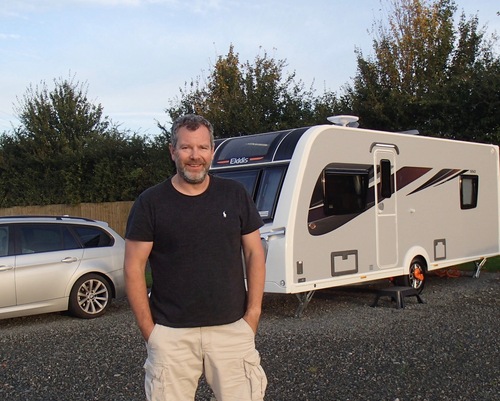
John Sootheran is a seasoned caravan and motorhome journalist who previously edited Caravan magazine, and now writes for Britain’s best-selling caravan magazine, Practical Caravan, along with Practical Motorhome and the Camping & Caravanning Club magazines. He also works with a number of major caravanning brands.

